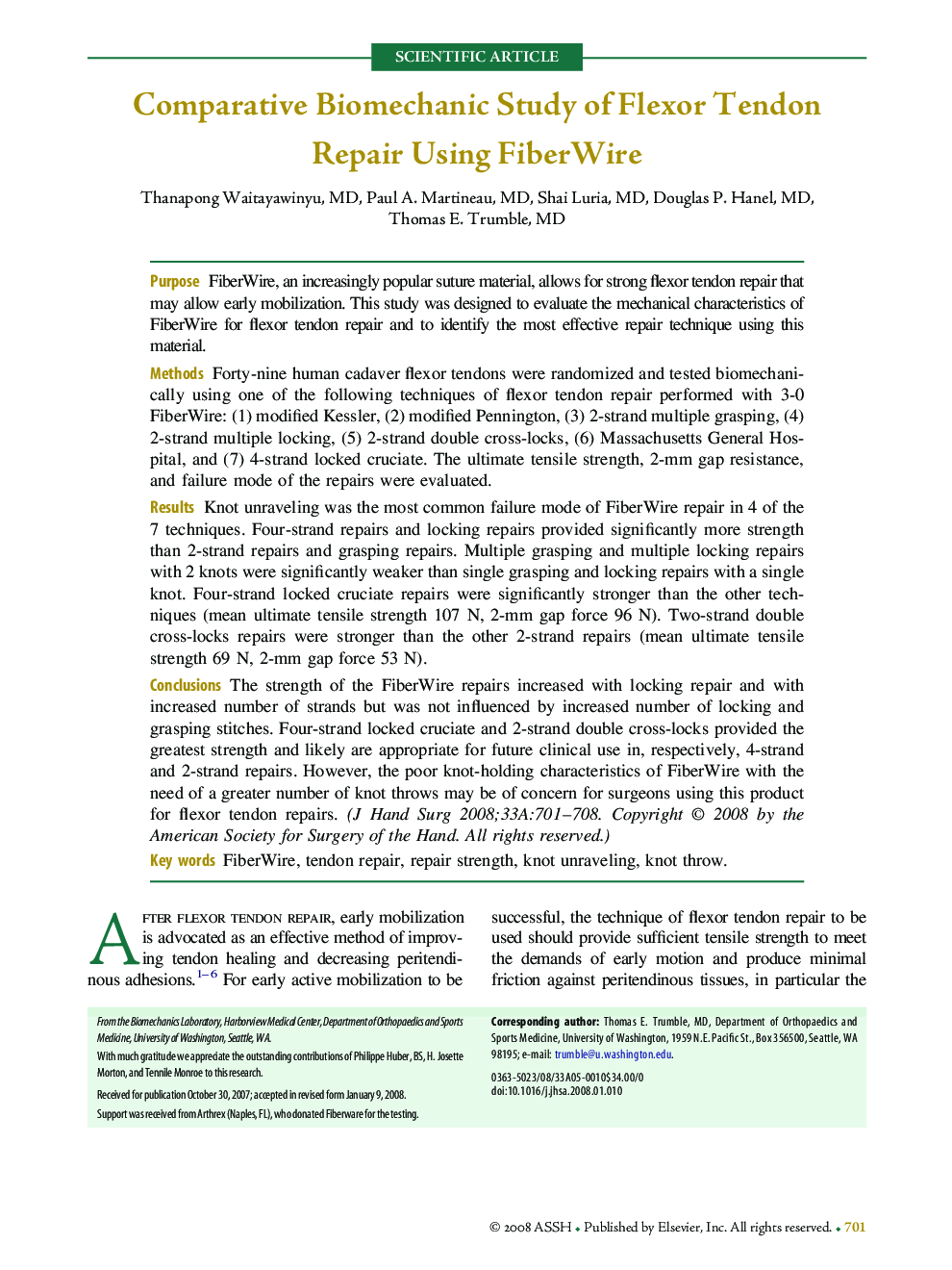| Article ID | Journal | Published Year | Pages | File Type |
|---|---|---|---|---|
| 4070795 | The Journal of Hand Surgery | 2008 | 8 Pages |
PurposeFiberWire, an increasingly popular suture material, allows for strong flexor tendon repair that may allow early mobilization. This study was designed to evaluate the mechanical characteristics of FiberWire for flexor tendon repair and to identify the most effective repair technique using this material.MethodsForty-nine human cadaver flexor tendons were randomized and tested biomechanically using one of the following techniques of flexor tendon repair performed with 3-0 FiberWire: (1) modified Kessler, (2) modified Pennington, (3) 2-strand multiple grasping, (4) 2-strand multiple locking, (5) 2-strand double cross-locks, (6) Massachusetts General Hospital, and (7) 4-strand locked cruciate. The ultimate tensile strength, 2-mm gap resistance, and failure mode of the repairs were evaluated.ResultsKnot unraveling was the most common failure mode of FiberWire repair in 4 of the 7 techniques. Four-strand repairs and locking repairs provided significantly more strength than 2-strand repairs and grasping repairs. Multiple grasping and multiple locking repairs with 2 knots were significantly weaker than single grasping and locking repairs with a single knot. Four-strand locked cruciate repairs were significantly stronger than the other techniques (mean ultimate tensile strength 107 N, 2-mm gap force 96 N). Two-strand double cross-locks repairs were stronger than the other 2-strand repairs (mean ultimate tensile strength 69 N, 2-mm gap force 53 N).ConclusionsThe strength of the FiberWire repairs increased with locking repair and with increased number of strands but was not influenced by increased number of locking and grasping stitches. Four-strand locked cruciate and 2-strand double cross-locks provided the greatest strength and likely are appropriate for future clinical use in, respectively, 4-strand and 2-strand repairs. However, the poor knot-holding characteristics of FiberWire with the need of a greater number of knot throws may be of concern for surgeons using this product for flexor tendon repairs.
